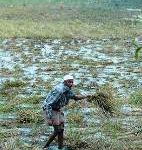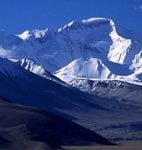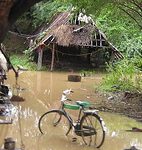As you know, when a monsoon downpour lashed at Nepal recently, the swelled Koshi River ran amok and broke its embankment. The resulting flood has taken many lives and swept out the homes and property of 70,000 people in Nepal and millions in India and Bangladesh. This is just one example of how different countries are so inextricably interdependent in terms of the environment.
Such examples abound. Toxic fumes emitted in one country cause acid rains in another. CFCs released into atmosphere in one part of the world breaks down the ozone layer at another part of the globe. Heat generated by industries and towns thousands of miles away takes a toll on the ice caps in alpine and polar regions.
There is a growing body of evidence that the world is heading towards an environmental catastrophe. Human activities have been significantly contributing to this phenomenon. We are depleting finite resources, destroying forests, pushing several species to extinction, polluting the air and water, causing global warming and rise in sea levels, and upsetting the global ecological systems.
Nepal, with its fragile ecology, is on the frontline of this gathering catastrophe. One does not have to be an expert to see evidence of climate change, as it is visible to our naked eyes. When I was growing up in the hills of Nepal, mosquitoes were rare in my village, which is now swarmed with these irritating creatures. The volume of water the Arun River carries in winter now is half of what used to be then. And the nearby forest does not have tigers anymore.
More broadly, the temperature is increasing in Nepal, the snow line is receding and the ice cap it thinning; twenty glacial lakes are on the verge of bursting; winters are getting drier and summers wetter; the air and water are getting polluted; deforestation – taking place at a rate of 1.8% a year — has led to soil erosion, loss of wildlife habitat and serious threat to 140 species of birds and animals.
Some of it is certainly happening due to Nepal’s own action, but much of it has occurred due to external factors, including climate change. So climate change has become one of humanity's most formidable challenges, and it requires a collective response. Each country must do what is consistent with its capacity and with the damage done. Nepal has been doing its part, implementing the existing policies and laws and formulating new ones to fill the gaps.
While doing so, Nepal has to strike an optimum balance between the imperatives to reduce poverty and underdevelopment and to preserve the environment. Accordingly, we have been trying to raise the people’s awareness and apply green methods of development, on our own and with the help of our development partners, including the United Kingdom. However, the current efforts and external aid are far from enough to achieve our developmental and environmental goals together.
To achieve these twin goals, it is essential that we scale up national efforts and work with others on robust regional and global initiatives. The magnificent but vulnerable Greater Himalayan region impacts on the weather of much of Asia, contributes 40 to 70% of the water of the Ganges depending on seasons, holds immense promise for hydropower and irrigation, and directly sustains the life of more than 500 million people in Nepal, India and Bangladesh, and many in China. Nepal, the home to most of the Himalayas, must be at the heart of any meaningful regional environment initiative.
This initiative should include such key elements as the sustainable use of energy and other resources; reduction in harmful emissions and effluents; development and use of green technologies; reforestation and protection of endangered species of flora and fauna; conservation of land and water catchment areas; and improved monitoring of weather and sharing of information, etc. Only a comprehensive and fair initiative will be able to overcome the tricky water-rights and other legal issues.
Such regional initiative should be tied to global strategies. Copenhagen must take us beyond [the] Kyoto [Protocol] and other things we have done in the past. It ought to reject empty promises and half-hearted measures and insist on clear mandatory caps, measurable benchmarks of progress and concrete enforcement tools. Carbon trade, a good short-term measure, should not be license for some powerful countries to continue polluting by cajoling or coercing the weak nations to remain pristine and poor.
Let us not forget that these weak nations cannot keep their teeming poor content in forests, nor can they absorb unabated global pollution.
Our generation, more than any other in the past, has devastated the environment, and we must strive to fix it as well. We need a healthy environment for our own survival; so do our children and grandchildren, to whom we have an obligation. Humanity has the resources and technology to achieve this objective; what we need is the will to get there.
Murari Sharma is the ambassador of Nepal to the United Kingdom. He delivered this speech to the UK-Bangladesh Climate Change Conference “Facing the Challenge” on September 10, 2008. The event, co-sponsored by the UK and Bangladeshi governments, brought together representatives of South Asian countries, donor nations, science and academia, the private sector and NGOs working in Bangladesh.
Homepage photo by Shinyai




